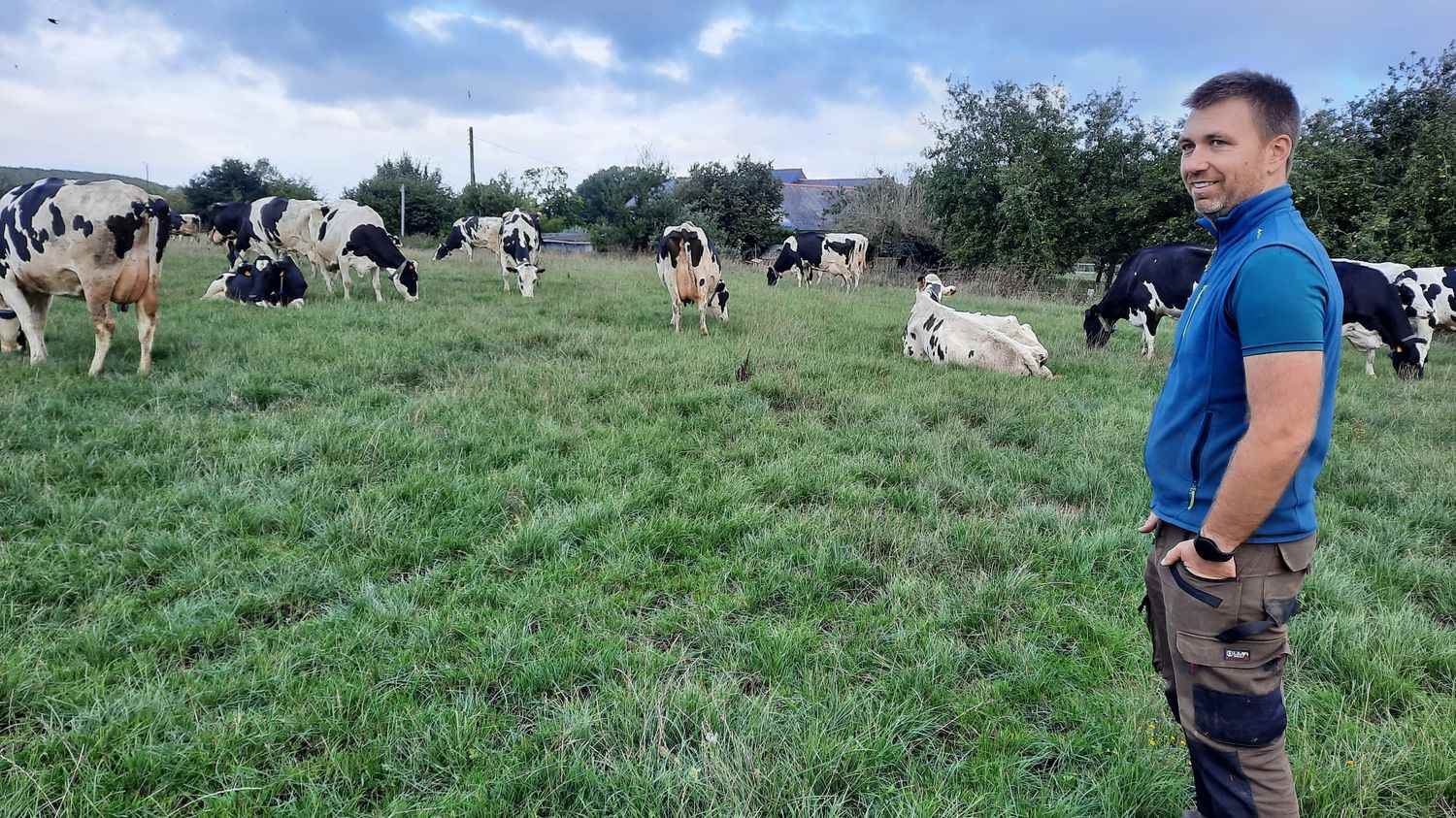The day is not yet up. It is 6 a.m. but, in this farm in Rheu near Rennes, everyone is already up. The cows moo in the meadow. “The priority is to bring the animals in for milking”, explains Romain Marquet, the owner of the premises. Direction the milking parlor with the 150 cows. The farm produces 1.4 million liters of milk per year for a cooperative located in Rennes.
Romain knows it: his job is constantly evolving. The latest advances in the profession will be presented at the largest professional breeding show (SPACE). It takes place in Rennes from Tuesday 13 to Thursday 15 September. Some 100,000 visitors are expected.
>> Drought: the president of the FNSEA “requests that distributors increase” milk prices in France
On Romain’s farm, there are no milking robots. Or rather no more robots: the breeder got rid of them four years ago, taking over from his parents. “Today in milking parlours, there is just as much on-board technology as a robot. The only difference is that you have to plug the cows“, details the farmer by putting the machine on the udder of his cows. “And afterwards, we have milking aid tools that allow us to have information on the animals without having to go for a walk with them and risk being jostled. It’s also safety…”
Pragmatic, Romain has redesigned the entire operation. Small daily improvements: “For example, you are walking on a floor that can vary by 35cm in height to adapt to the size of the milker.” That looks anecdotal like that, but the Mutualité sociale agricole (MSA) subsidized this purchase to avoid musculoskeletal disorders.
Saving gestures, saving energy too. The water is heated by solar panels to wash the milkers. It is then recycled to clean the rest of the farm. Small daily improvements, obviously in line with the reality of the outside world. “We did not wait for everything that is happening today to do it. The work to reduce energy consumption, everything that is good for energy consumption in any way is good for the wallet”emphasizes Romain.
Improving working conditions is good for the animals, it’s good for us, so we all have an interest in doing so
Romain Marquet, cattle farmer near Rennesat franceinfo
This summer, drought has hit French farmers hard. In Brittany, we probably suffered less than elsewhere. At least in appearance: the meadows are very green. “Above, it’s wet, the grass has grown back. Below, the stock needs to be restocked, that’s clear”, observes Roman. These cows were able to find their pasture ten days ago. “Three weeks ago, everything was still toast.”
Despite the drought, the breeder is not afraid of winter. “We had a good stock last year, because we were lucky to have very good harvestsexplains Roman. There is a saying that a very good year follows a bad one. We are in it. Making stock saves the structures that were able to do so the previous year.”
Farmers are also faced with soaring energy prices and therefore fertilizer prices. But faced with that, Romain is rather serene. He is very proud of having set up, with three associates, a biogas unit 2 km from his farm. “We have livestock effluents on our farms, manure and slurry, cows, pigs, everything mixed up, which we use as fertilizer but which do not smell good.explains the farmer. It has to be valued in one way or another, so we said to ourselves why not methanisation.”

“The principle is that we will continue digestion in a large concrete tank which has the same temperature as the cow, which will be agitated as if it were walking, so that all the bacteria feel good in motion and continue their work. And by digesting, they do like the cow, they make gas except that it is contained and injected directly into the GRDF network for the boilers of individuals or companies”, explains Romain. An investment of 4.5 million euros, but the game is worth the effort. The biogas plant produces 11 gigawatts per year.
We provide what our municipality of 4,000 inhabitants consumes in total. Finally, the municipality is autonomous with the manure and slurry of its cows
Romain Marquet, cattle farmer near Rennesat franceinfo
Romain’s mother, Catherine, will retire at the end of the year. She is quite admiring of the road traveled: “We did what my husband had always done, but what he puts in place is good.”
How to reduce the carbon footprint of farming? Probably not by reducing the number of animals, believes the president of SPACE, Marcel Denieul: “If we reduce the number of ruminants, we will reduce grasslands and grasslands. These are carbon stocks that are in the soil and if we put grasslands in cultivation, we will release CO2 into the air.”
But then how what solutions? “The major element at our level is to be very consistent, to use less nitrogenous fertilizers and therefore make better use of farm manures and manure. But it is also better to use legumes which are plants that fix nitrogen. Then refine the feed to avoid as much waste as possible”, details Marcel Denieul. According to him, in 40 years, the amount of food needed to feed a chicken has been halved. Not to mention the energy savings that are within everyone’s reach.
